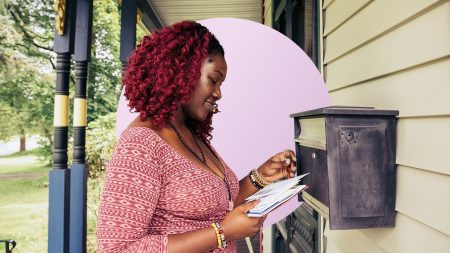Key takeaways
- Fannie Mae, officially the Federal National Mortgage Association (FNMA), is a government-sponsored enterprise that maintains liquidity in the mortgage market by buying loans from banks and mortgage companies.
- Fannie Mae does not sell mortgages directly to consumers, but it does sponsor different loan programs (obtained through approved lenders) and provide counseling networks, educational services and the HomePath real estate website.
- Fannie Mae has had a significant impact on the housing market since its establishment in 1938, promoting homeownership among middle- and lower-income Americans by backing long-term, fixed-rate mortgages.
The Federal National Mortgage Association (FNMA), colloquially known as Fannie Mae, is a Congressionally chartered enterprise that acts as a major player in the mortgage industry.
Fannie Mae does not originate or offer mortgages directly to borrowers. Instead, it purchases them from lenders who do, in effect guaranteeing a market for the loans. By investing in home loans this way, Fannie reduces lenders’ risk.
Along with buying loans from banks and mortgage companies, Fannie Mae sponsors various loan programs that financial institutions can then offer to borrowers. It also extends education programs and services to consumers in an effort to help low- and middle-income Americans on the path to homeownership.
What is Fannie Mae?
Created during the Great Depression, Fannie Mae is structured as a shareholder-owned company, though it operates now under the control of the Federal Finance Housing Agency (FHFA). It is what is known as a government-sponsored enterprise (GSE): a private agency or corporation with a federal charter to provide financial services to the public.
In Fannie’s case, those financial services revolve around home loans. Fannie Mae performs a variety of functions to back the mortgage industry and, by extension, the housing market.
To the thousands of banks, credit unions and mortgage companies that finance home purchases, Fannie Mae offers ready access to funds on reasonable terms. With a commitment to “facilitating equitable and sustainable access to homeownership and quality, affordable rental housing across America,” Fannie also indirectly aids individuals.
What does Fannie Mae do?
One of Fannie Mae’s main roles is to buy mortgages from lenders that meet its criteria (FNMA loans). While Fannie Mae is primarily a loan investor interacting with financial institutions, borrowers can still engage with some of the GSE’s offerings. Specifically, borrowers can participate in a Fannie Mae loan program by applying for one of the loan types that it sponsors such as HomeReady, 97% LTV, RefiNow and HFA Preferred.
Fannie Mae provides other types of support for the housing market and consumers, as well. That includes financing affordable rental housing through programs like its Delegated Underwriting and Servicing (DUS), which leverages private capital to finance multifamily housing. Fannie also works with developers and other private entities by investing in Low-Income Housing Tax Credit (LIHTC) properties. Its goal is to help create and preserve affordable multifamily housing.
In addition, Fannie Mae provides rental and homeownership education. It offers access to counselors who can help individuals sort through financial and disaster relief challenges.
That’s a lot, so let’s break it down. More specifically, what is Fannie Mae doing in the mortgage market? This GSE:
Buys and backs mortgages
Fannie Mae buys home loans and mortgages in the secondary mortgage market (where lenders sell the loans and mortgages they’ve originated). This in turn frees up the lender’s capital so that it can extend new loans to more borrowers. Most mortgage originators do actually end up selling their loans, but since they often continue servicing them, the mortgage-holder never knows it.
To qualify for purchase by Fannie Mae, the mortgage needs to fall into the category of FNMA loans. What is an FNMA loan, then? It’s one that meets Fannie Mae’s requirements, which include a maximum loan amount (determined by area) and underwriting requirements like debt-to-income ratio (DTI) and loan-to-value ratio (LTV) limits. It also needs to come from a lender that’s been approved by Fannie Mae.
Fannie Mae doesn’t act alone here. It has a sister GSE: Freddie Mac (officially the Federal Home Loan Mortgage Corporation). Fannie and Freddie are the largest mortgage market-makers in the U.S.
After purchasing mortgages from lenders, both Fannie and Freddie either hold the loans individually or package them into mortgage-backed securities to be sold to investors. Either way, the burden of the debt is acquired by Fannie (or Freddie) and pressure is thus moved away from private lending institutions. Fannie Mae, like Freddie Mac, has a focus of keeping the mortgage market fluid and well-regulated so that credit and the flow of funds operate smoothly.
Operates HomePath
Homepath.com is Fannie Mae’s real estate marketing website. It can be used by prospective homebuyers and real estate agents to search for Fannie Mae-owned properties that are available to be purchased.
The condition of the homes available through HomePath may vary. Often, the properties listed on the site are homes that owners voluntarily conveyed to Fannie Mae in order to avoid foreclosure. Many of the properties have undergone repairs, but some have not.
The HomePath program offers incentives to help owner-occupants buy its homes:
- The First Look program: During the first 30 days a home is listed on the site, only owner-occupants have the opportunity to make offers and purchase the property. This eliminates competition from investors for newly listed HomePath properties.
- Income-based closing cost credits: Owner-occupant buyers who have incomes at or below the area median income (AMI) may be eligible for closing cost credits of up to 3 percent of the sales price.
- Closing cost credits for first-time homebuyers: Borrowers in this category who complete Fannie Mae’s HomeView course through the Ready Buyer program are eligible for a closing cost credit of up to 3 percent.
There are also certain criteria to be aware of when purchasing a home through HomePath, including:
- The homes must be purchased as-is
- If you’re represented by a real estate agent, your agent must register on the HomePath website in order to submit an offer on your behalf
- You must be pre-approved for a loan at the time of the offer (if the purchase is being made with financing)
Runs counseling networks
Fannie Mae directly aids consumers by providing a variety of counseling services. They include information and assistance dealing with financial uncertainty, budgeting, disaster recovery or other types of housing-related challenges.
Here are a few of the most well-known counseling networks from Fannie Mae:
- Mortgage Help Network: The network is free for homeowners who are experiencing financial challenges or who have been impacted by disaster. The program provides no-cost counseling services from counselors that have been approved by the U.S. Department of Housing and Urban Development (HUD).
- Disaster Response Network: A part of the larger Mortgage Help Network, this program helps to support homeowners whose property has been impacted by a natural disaster or other significant crises. This support is available in multiple languages.
- Tenant-in-Place Rental Program: This program offers support and assistance to tenants who are renting a Fannie Mae-financed home that’s going into foreclosure. This program provides options including signing a new lease, keeping their current lease to continue renting the home or getting financial relocation assistance.
Fannie Mae loan products
Like government agencies such as the Federal Home Administration (FHA), Fannie Mae operates through private lenders to offer financing options. The terms are often more generous than those of non-Fannie-sponsored loan products, which might require 10 or 20 percent of the property’s price as a down payment.
The loan programs Fannie sponsors include:
How do Fannie Mae (FNMA) loans work?
You cannot get a loan directly from Fannie Mae — even if it’s one of the Fannie Mae program loans. Instead, you need to get the loan from a bank, credit union or online lender. If you want to take advantage of one of the Fannie-sponsored loan programs, that lender needs to be Fannie-approved.
The mortgages eligible for Fannie Mae to purchase are called conforming loans. A conforming loan has specific guidelines for the borrower’s credit score, down payment amount, DTI ratio, LTV ratio and the type of property that can be purchased. Also, the loan cannot be above a certain size, and there are rules regarding the calculation of its interest rate and its amortization schedule.
$806,500
Conforming loan limit in 2025 in most parts of the U.S.
How has Fannie Mae impacted the housing market?
To best understand this organization’s impact on the domestic mortgage market, let’s look at a timeline of notable dates in Fannie Mae’s history:
- 1938: Fannie Mae was established by the Congressional Fannie Mae (FNMA) Charter Act. In the wake of the Great Depression, nearly a quarter of U.S. homeowners lost their properties to foreclosure — and part of the government response was chartering Fannie Mae to help stabilize the housing market.
- Late 1940s: Prior to Fannie Mae, homeownership was within reach only for the privileged few. Mortgages were short-term and covered at best half of a home’s price. To help there, Fannie Mae helped banks finance long-term (30-year), fixed-rate mortgages, which increased accessibility to homeownership for middle- and lower-income Americans. With more affordable monthly payments and lower down-payment thresholds, owning a home became part of the American Dream.
- 2007: Leading up to the collapse of the housing market that took place in 2007, Fannie Mae had backed subprime mortgages. Once the market collapsed, it lost millions in defaulted loans; the federal government had to bail out Fannie Mae and placed it under FHFA conservatorship, where it remains today.
- 2020: Amid the global COVID-19 pandemic, when many Americans were struggling financially, it provided mortgage relief and protections for borrowers with FNMA loans. Those included forbearance and loan modifications, as well as a foreclosure moratorium.
FAQs
Read the full article here









